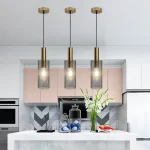Creating a functional and aesthetically pleasing kitchen is a dream for many homeowners. One essential element that significantly contributes to both the practicality and style of your kitchen is the kitchen island pendant lighting. These lighting fixtures not only illuminate your workspace but also serve as a focal point, adding character and charm to your culinary area. In this article, we will explore various aspects of kitchen island pendant lighting, providing you with insights to choose the perfect fixtures for your home.
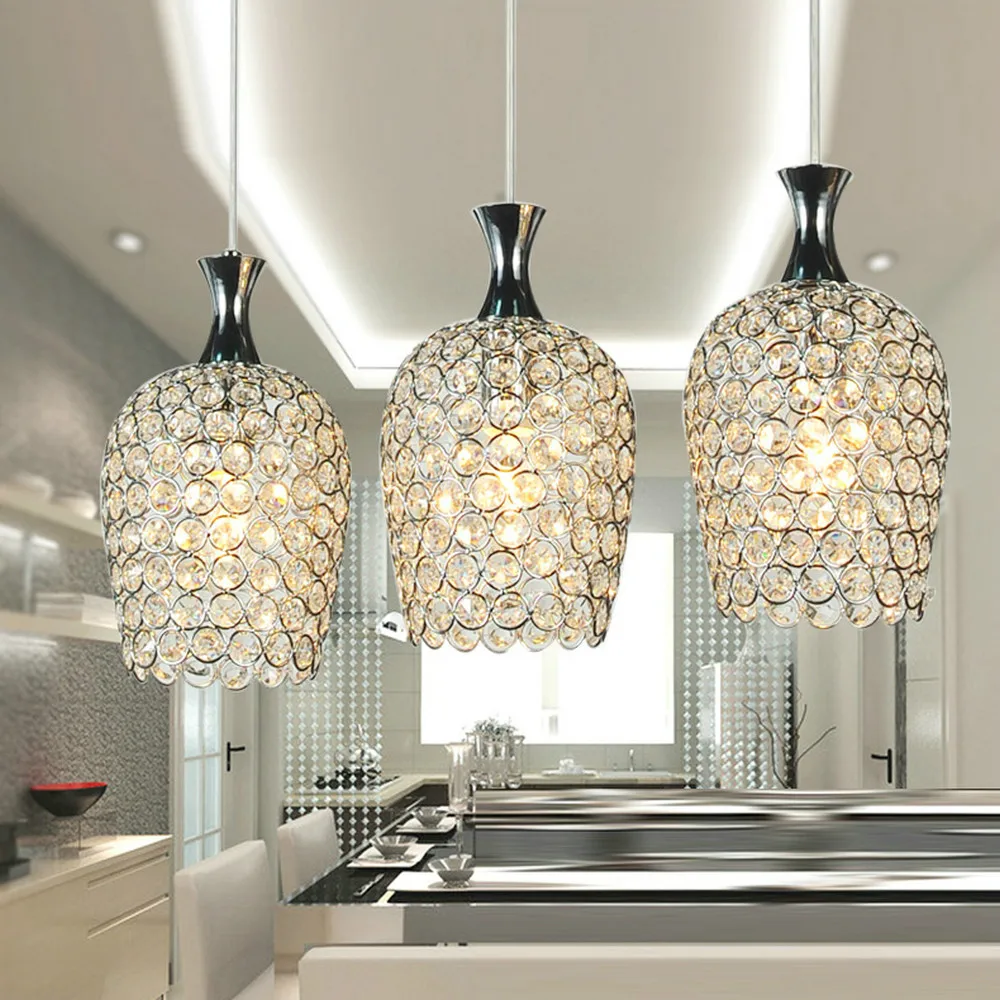 Why Choose Pendant Lighting for Kitchen Island?
Why Choose Pendant Lighting for Kitchen Island?
Kitchen island pendant lighting offers a blend of functionality and style that other lighting options may not provide. By strategically placing pendant lights above your kitchen island, you can achieve optimal lighting for cooking and preparing meals while enhancing the overall aesthetic of your kitchen.
Functional Benefits
Functional benefits of pendant lighting include focused illumination that reduces shadows and provides ample light for cooking tasks. Additionally, pendant lights can define the kitchen island area, making it a central hub for family gatherings and social interactions.
Aesthetic Appeal
From modern minimalist designs to classic vintage styles, kitchen island pendant lighting comes in a wide array of options to match any kitchen décor. These lights add depth and dimension to the space, creating a warm and inviting atmosphere.
Types of Pendant Lighting for Kitchen Island
Understanding the different types of pendant lighting available can help you make an informed decision that best suits your kitchen’s needs and style.
Traditional Pendant Lights
Traditional pendant lights often feature ornate designs, incorporating materials like glass, metal, or fabric. These fixtures are perfect for kitchens with a classic or vintage theme, adding a touch of elegance and sophistication.
Modern Pendant Lights
Modern pendant lights boast sleek lines and minimalist designs, often utilizing materials such as stainless steel, acrylic, or glass. These fixtures are ideal for contemporary kitchens, offering a clean and streamlined look that complements modern appliances and cabinetry.
Industrial Pendant Lights
Industrial pendant lights typically incorporate raw materials like exposed bulbs, metal finishes, and sturdy construction. These lights are suitable for loft-style or industrial-themed kitchens, providing a rugged and edgy aesthetic.
Glass Pendant Lights
Glass pendant lights come in various shapes and colors, adding a touch of brightness and transparency to your kitchen. These fixtures can scatter light beautifully, creating a lively and vibrant atmosphere.
Drum Pendant Lights
Drum pendant lights feature a cylindrical shade that envelops the bulb, offering a diffused and soft illumination. These lights are versatile and can blend seamlessly with various kitchen styles.
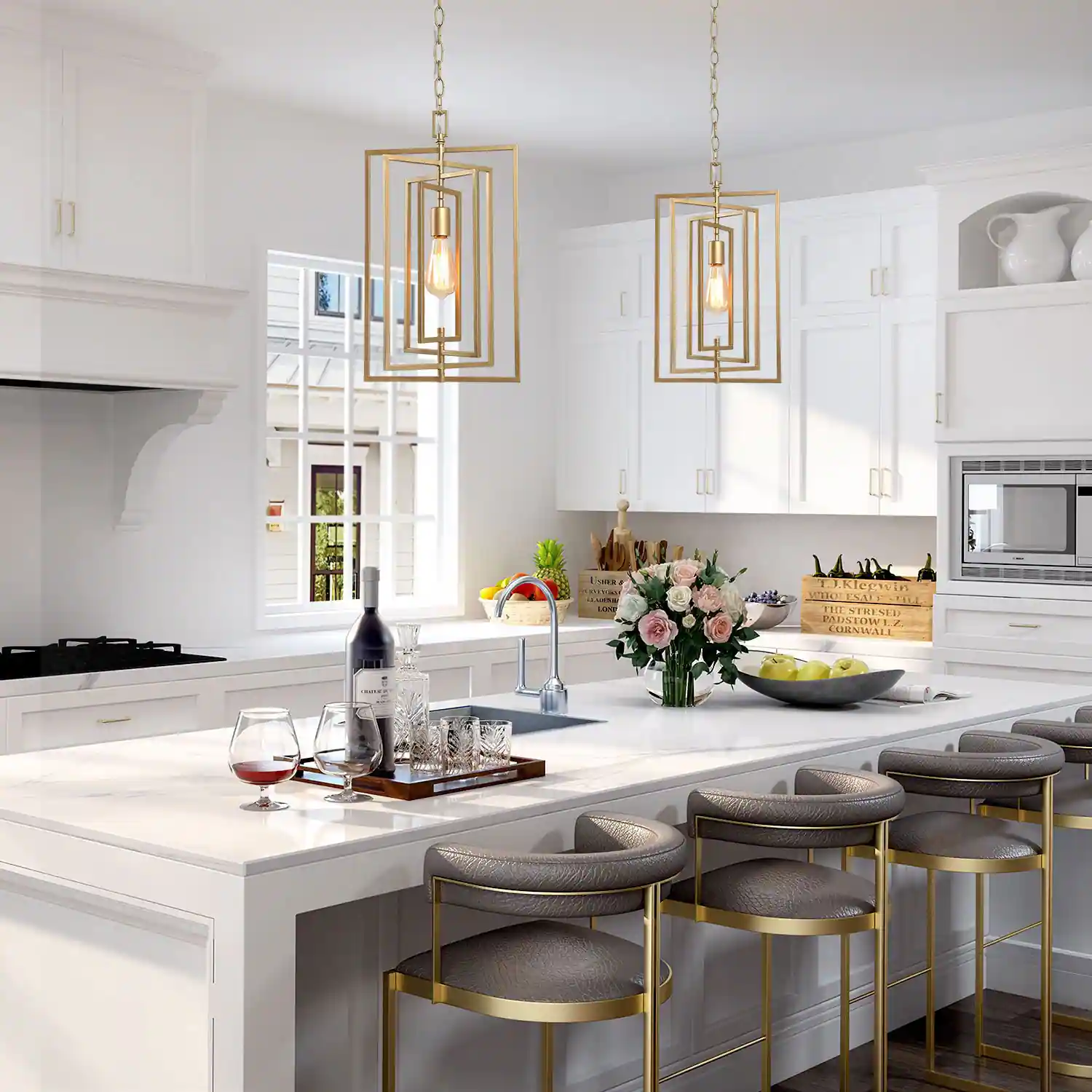 Choosing the Right Size and Height
Choosing the Right Size and Height
Selecting the appropriate size and height for your pendant lights is crucial to achieving a balanced and harmonious kitchen layout.
Determining the Number of Pendants
The number of pendant lights you need depends on the size of your kitchen island. As a general rule, allow about 30-34 inches between each pendant to ensure even lighting distribution. For larger islands, multiple pendants may be necessary to provide adequate illumination.
Selecting the Right Diameter
The diameter of your pendant lights should be proportional to the size of your kitchen island. A good guideline is to choose pendants with a diameter that complements the width of the island. For example, a 12-inch pendant is suitable for a smaller island, while larger islands may require pendants with a diameter of 16 inches or more.
Adjusting the Height
The height at which you hang your pendant lights affects both functionality and aesthetics. Typically, pendant lights should be suspended 30-36 inches above the countertop, allowing for sufficient workspace lighting without obstructing movement around the island.
Materials and Finishes
The materials and finishes of your pendant lights play a significant role in the overall look and durability of the fixtures.
Metal Finishes
Metal finishes such as brushed nickel, matte black, and brass are popular choices for kitchen pendant lights. These finishes are not only durable but also add a touch of sophistication and modernity to your kitchen space.
Glass and Crystal
Glass and crystal pendant lights offer a timeless elegance, reflecting light beautifully and adding a luxurious feel to your kitchen. These materials are versatile and can complement various kitchen styles, from traditional to contemporary.
Fabric Shades
Fabric-shaded pendants provide a softer, more diffused light, creating a cozy and inviting atmosphere. They are an excellent choice for kitchens that prioritize warmth and comfort.
Natural Materials
Natural materials like wood, rattan, and bamboo bring an organic and earthy element to your kitchen. These materials are perfect for kitchens with a rustic or farmhouse style, adding texture and warmth to the space.
Lighting Types: LED vs. Incandescent
When choosing kitchen island pendant lighting, it’s essential to consider the type of lighting that best suits your needs.
LED Pendant Lights
LED pendant lights are energy-efficient and have a longer lifespan compared to traditional incandescent bulbs. They emit less heat, which can help reduce energy costs and maintenance frequency. Additionally, LED lights offer a wide range of color temperatures, allowing you to customize the ambiance in your kitchen.
Incandescent Pendant Lights
Incandescent pendant lights provide a warm and inviting glow, creating a cozy atmosphere in your kitchen. While they are less energy-efficient than LEDs, they are often preferred for their superior color rendering and instant full brightness.
Choosing the Right Bulb
The type of bulb you choose for your pendant lights can significantly impact the overall lighting effect. Consider factors such as brightness, color temperature, and energy efficiency when selecting bulbs to ensure they meet your kitchen’s functional and aesthetic requirements.
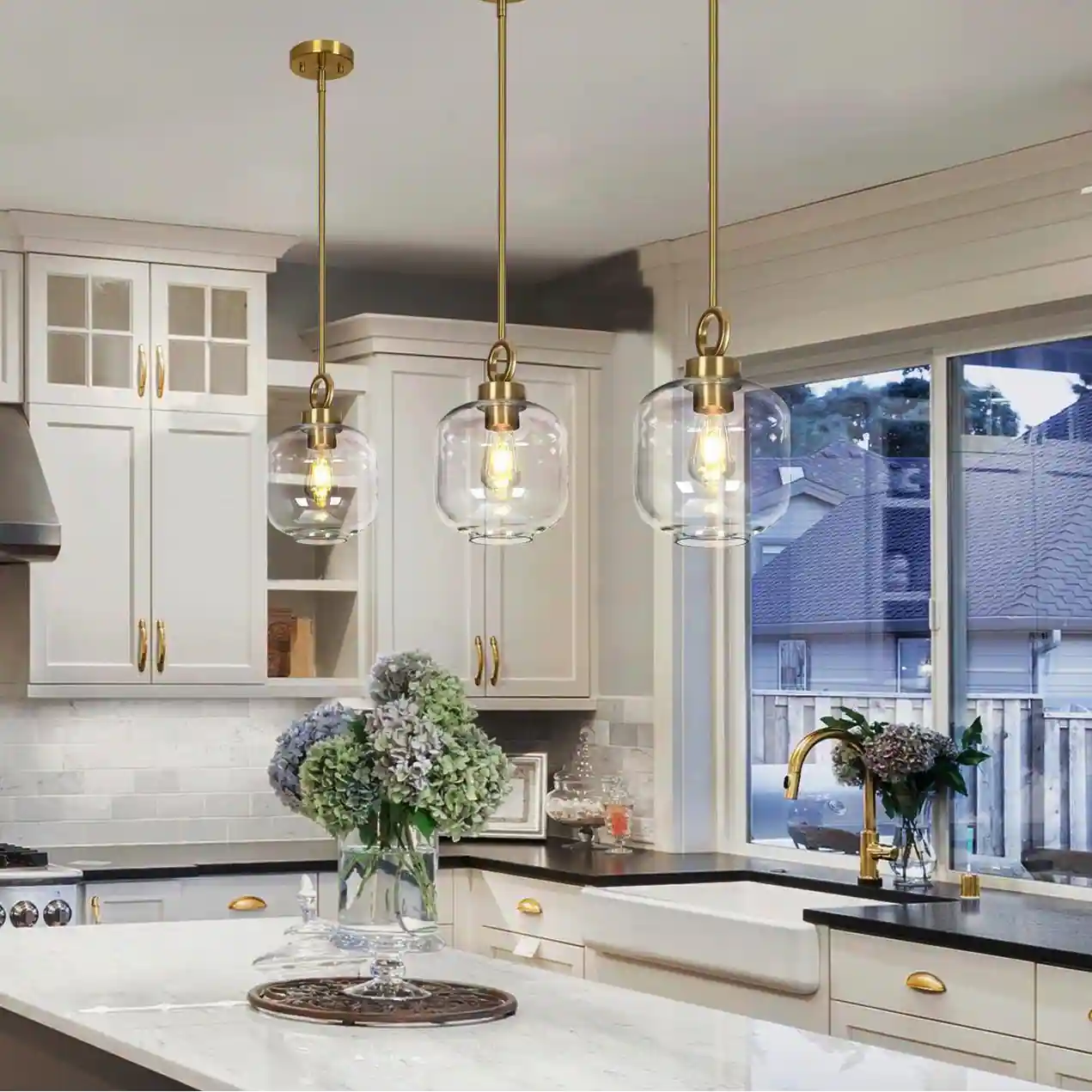 Color Temperature and Brightness
Color Temperature and Brightness
Selecting the appropriate color temperature and brightness is crucial for creating the desired atmosphere in your kitchen.
Color Temperature
Color temperature is measured in Kelvins (K) and determines the hue of the light emitted by your pendant fixtures. For kitchens, a color temperature between 2700K and 3000K provides a warm and inviting glow, while 4000K to 5000K offers a cooler and more energizing light suitable for task lighting.
Brightness
Brightness is typically measured in lumens. For kitchen island lighting, aim for a total of 300-400 lumens per pendant light. This ensures that your kitchen island is well-lit for cooking tasks without being overly bright or harsh.
Placement and Spacing
Proper placement and spacing of pendant lights are essential for achieving balanced and effective lighting in your kitchen.
Centering the Pendants
Pendants should be centered above the kitchen island to ensure even light distribution. Use a measuring tape to determine the midpoint of the island and mark the placement for each fixture accordingly.
Spacing Between Fixtures
Ensure that there is adequate space between each pendant light to prevent them from overcrowding the space. As mentioned earlier, maintaining a distance of about 30-34 inches between pendants is generally recommended for optimal lighting.
Avoiding Obstructions
When hanging pendant lights, make sure they do not obstruct views or interfere with movement around the kitchen island. Proper spacing and height adjustments can help achieve a functional and aesthetically pleasing arrangement.
Installation Tips
Installing kitchen island pendant lighting can be a straightforward process if you follow these essential tips.
Electrical Considerations
Before installation, ensure that your kitchen has the appropriate electrical setup to support pendant lighting fixtures. If necessary, consult a professional electrician to handle the wiring and electrical work safely.
Measuring and Marking
Accurate measurements are crucial for proper placement of pendant lights. Measure the length of your kitchen island and determine the number of pendants needed. Mark the ceiling where each fixture will be installed, ensuring they are evenly spaced and centered.
Secure Mounting
Pendant lights should be securely mounted to the ceiling to prevent accidents and ensure stability. Use appropriate mounting hardware and follow the manufacturer’s installation instructions carefully.
Wiring and Safety
Always prioritize safety when installing pendant lights. Turn off the power supply before handling any electrical components, and use proper wiring techniques to avoid potential hazards.
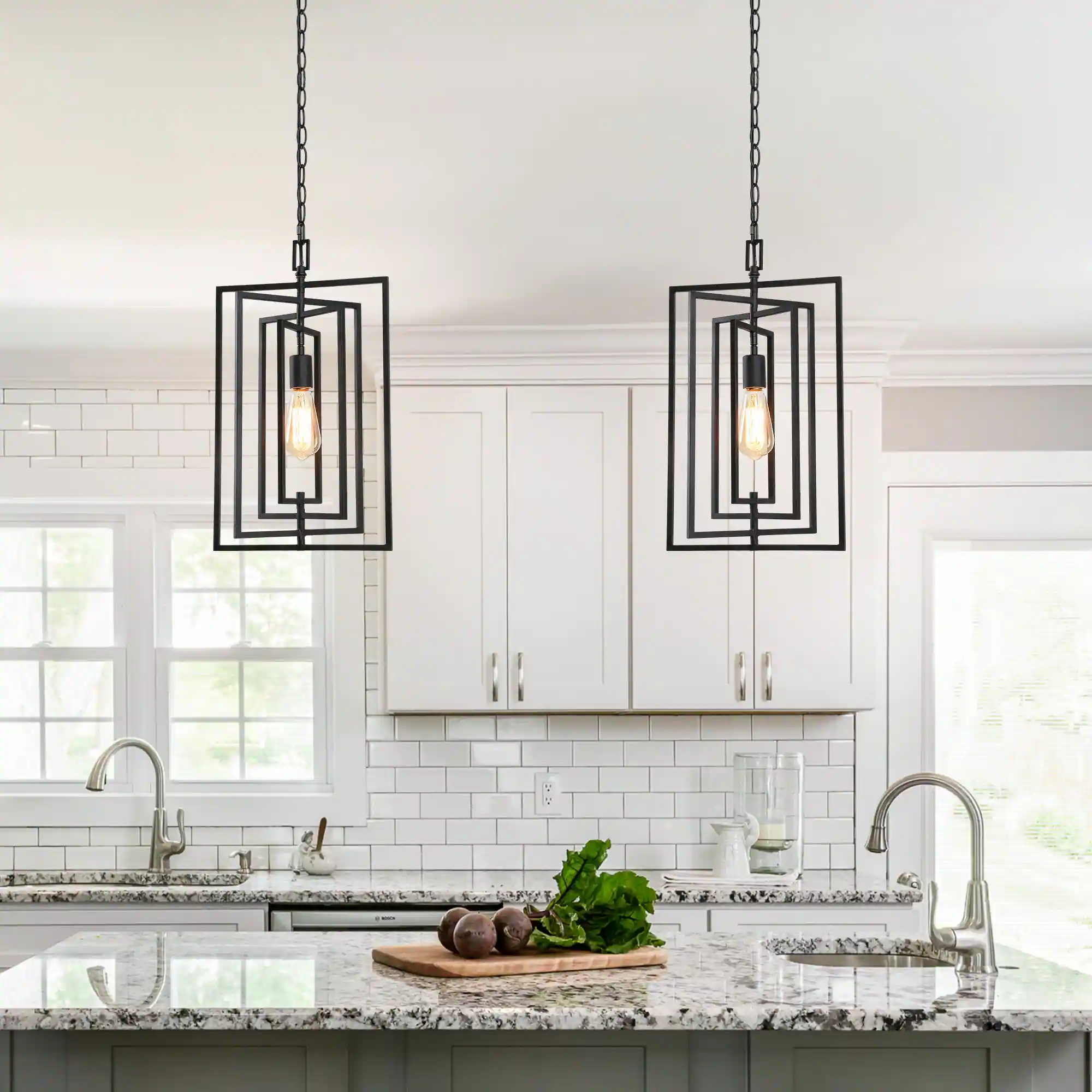 Maintenance and Care
Maintenance and Care
Regular maintenance and care can extend the life of your kitchen island pendant lighting and keep them looking their best.
Cleaning Fixtures
Dust and clean your pendant lights regularly to remove any debris that may accumulate on the fixtures. For metal finishes, use a soft cloth and a gentle cleaner to prevent scratches. Glass and crystal pendants can be cleaned with a mixture of water and mild detergent.
Bulb Replacement
When replacing bulbs, ensure they are compatible with your pendant fixtures. LEDs are typically easier to replace and offer longer lifespans, reducing the need for frequent maintenance.
Inspecting Wiring
Periodically inspect the wiring and electrical connections of your pendant lights to ensure they are secure and functioning correctly. If you notice any issues, consult a professional electrician for repairs.
Trends in Pendant Lighting for Kitchen Island
Staying updated with the latest trends in kitchen island pendant lighting can help you choose fixtures that are both stylish and modern.
Mixed Materials
Combining different materials, such as metal and glass or wood and fabric, creates visually interesting pendant lights that add depth and texture to your kitchen.
Geometric Shapes
Geometric shapes are increasingly popular in pendant lighting designs. These fixtures add a contemporary and artistic touch, making them stand out as statement pieces in your kitchen.
Minimalist Designs
Minimalist pendant lights with clean lines and simple forms are favored in modern kitchens. These fixtures provide a sleek and understated look that complements various décor styles.
Smart Lighting
Integrating smart technology with pendant lighting allows you to control your kitchen lights remotely, adjust brightness levels, and even change color temperatures to suit different moods and tasks.
Budget-Friendly Options
You don’t have to break the bank to find stylish and functional kitchen island pendant lighting. There are numerous budget-friendly options available that offer great design and quality.
DIY Pendant Lights
Creating your own pendant lights can be a cost-effective way to add unique fixtures to your kitchen. By repurposing materials or customizing existing fixtures, you can achieve a personalized look without spending a fortune.
Affordable Brands
Many lighting brands offer affordable pendant light options without compromising on style or quality. Researching and comparing different brands can help you find the perfect fixtures that fit your budget.
Sales and Discounts
Keep an eye out for sales, discounts, and clearance events at home improvement stores and online retailers. Purchasing pendant lights during these times can help you save money while still getting high-quality fixtures.
Eco-Friendly Lighting Options
Sustainability is becoming increasingly important in home design, and eco-friendly pendant lighting is a great way to reduce your environmental impact.
Energy-Efficient Bulbs
Choosing energy-efficient bulbs, such as LEDs, reduces energy consumption and lowers your electricity bills. These bulbs also last longer, minimizing waste and the need for frequent replacements.
Sustainable Materials
Opt for pendant lights made from sustainable materials like reclaimed wood, recycled metal, or eco-friendly glass. These materials reduce environmental impact and promote responsible manufacturing practices.
Smart Lighting Controls
Incorporating smart lighting controls allows you to optimize energy use by adjusting brightness levels and turning lights off when not in use. This not only conserves energy but also extends the lifespan of your bulbs.
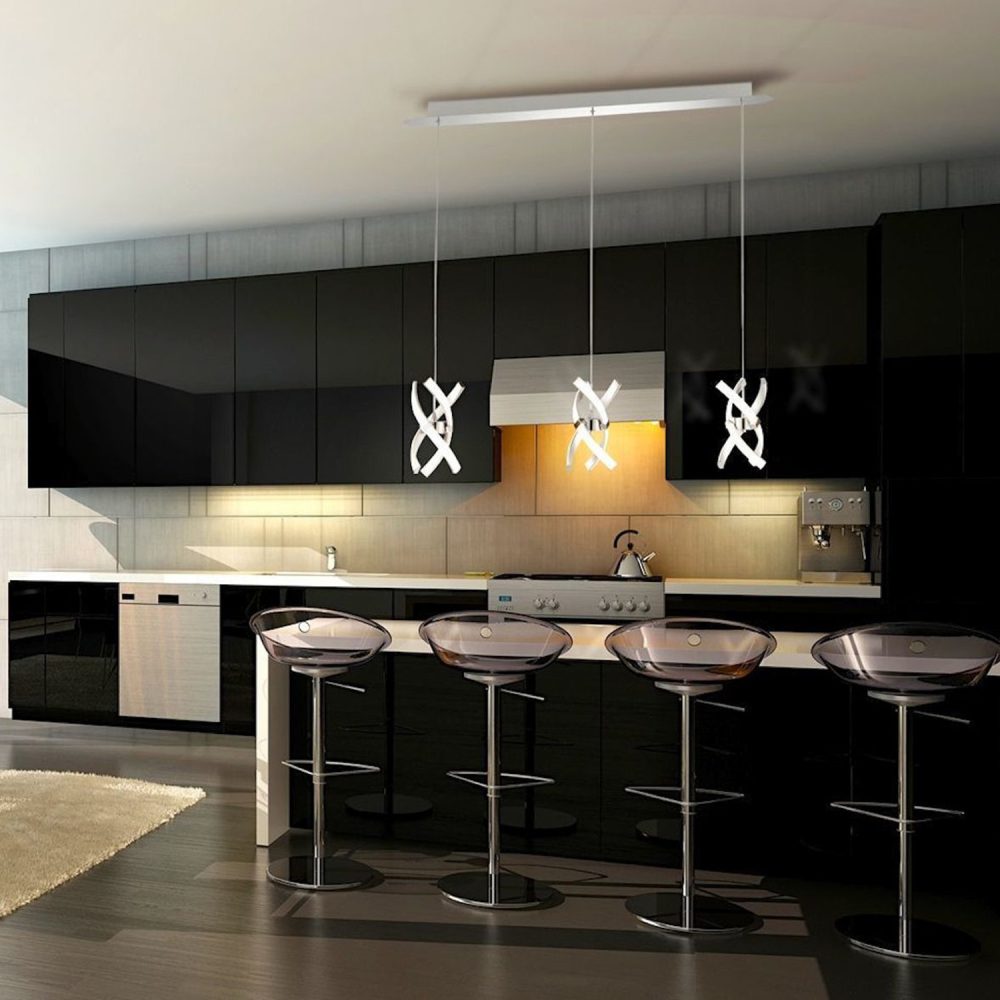 Customizing Your Pendant Lighting for Kitchen Island
Customizing Your Pendant Lighting for Kitchen Island
Personalizing your pendant lighting can help you create a unique and cohesive look in your kitchen.
Choosing Colors and Finishes
Select colors and finishes that complement your kitchen’s color scheme and cabinetry. Whether you prefer bold hues or neutral tones, the right choice can enhance the overall aesthetic of your space.
Mixing and Matching
Don’t be afraid to mix and match different pendant styles and sizes for a more eclectic and personalized look. Combining various designs can add visual interest and reflect your individual taste.
Adding Decorative Elements
Incorporate decorative elements such as patterned shades, intricate metalwork, or unique glass designs to make your pendant lights stand out as statement pieces in your kitchen.
Maximizing Light Efficiency
Maximizing the efficiency of your kitchen island pendant lighting ensures that you get the most out of your lighting fixtures.
Layered Lighting Approach
Implementing a layered lighting approach by combining pendant lights with other light sources, such as under-cabinet lighting or recessed ceiling lights, creates a well-lit and versatile kitchen space.
Dimmable Fixtures
Installing dimmable pendant lights allows you to adjust the brightness based on your needs and activities. This flexibility enhances both functionality and ambiance in your kitchen.
Reflective Surfaces
Using reflective surfaces, such as glass or mirrored finishes, can amplify the light emitted by your pendant fixtures, enhancing overall illumination without increasing energy consumption.
Integrating Technology with Pendant Lighting
Incorporating technology into your pendant lighting can enhance convenience and functionality in your kitchen.
Smart Bulbs
Smart bulbs offer features such as remote control, programmable schedules, and color temperature adjustments. These capabilities allow you to customize your kitchen lighting to suit different moods and activities effortlessly.
Wireless Controls
Wireless controls, including smartphone apps and voice-activated assistants, provide easy access to adjust your pendant lighting without the need for physical switches.
Energy Monitoring
Some smart lighting systems include energy monitoring features, enabling you to track and optimize your energy usage for greater efficiency and cost savings.
Enhancing Safety and Visibility
Proper lighting is essential for ensuring safety and visibility in your kitchen.
Task Lighting
Pendant lights above the kitchen island provide focused task lighting, making it easier to perform cooking and food preparation tasks safely and efficiently.
Reducing Glare
Choosing pendant lights with diffused shades or adjustable brightness settings helps reduce glare, preventing eye strain and enhancing comfort while working in the kitchen.
Highlighting Features
Use pendant lighting to highlight key areas of your kitchen, such as countertops, appliances, or decorative elements. This not only improves visibility but also adds a stylish touch to your space.
Adapting to Small Kitchens
Even in smaller kitchens, kitchen island pendant lighting can make a significant impact by enhancing both functionality and style.
Space-Saving Designs
Opt for pendant lights with slim profiles or adjustable heights to maximize space and prevent overcrowding in compact kitchens.
Multi-Functional Fixtures
Choose pendant lights that offer multiple functions, such as built-in storage for bulbs or integrated shelves for displaying small items, to optimize space usage.
Light Colors and Reflective Materials
Light-colored pendant fixtures and reflective materials can make a small kitchen appear brighter and more spacious, enhancing the overall feel of the space.
Enhancing Large Kitchens
In larger kitchens, pendant lighting plays a crucial role in defining different zones and ensuring adequate illumination.
Zone Lighting
Use pendant lights to create distinct zones within a large kitchen, such as cooking, dining, and prepping areas. This helps organize the space and improves overall functionality.
Statement Fixtures
In expansive kitchens, larger or more elaborate pendant fixtures can serve as statement pieces, adding visual interest and anchoring the design theme.
Layered Lighting
Implement a layered lighting strategy by combining pendant lights with other lighting sources, such as recessed or track lighting, to ensure comprehensive illumination throughout the space.
Conclusion
Investing in the right kitchen island pendant lighting can transform your kitchen into a functional and stylish space where cooking and socializing seamlessly blend. By considering factors such as design styles, materials, size, placement, and energy efficiency, you can select pendant lights that not only illuminate your kitchen island effectively but also enhance the overall aesthetic of your culinary space. Whether you prefer traditional elegance, modern minimalism, or industrial chic, there is a perfect pendant lighting solution to match your unique taste and kitchen design. Illuminate your kitchen with thoughtfully chosen pendant lights and enjoy a harmonious blend of form and function in the heart of your home.
